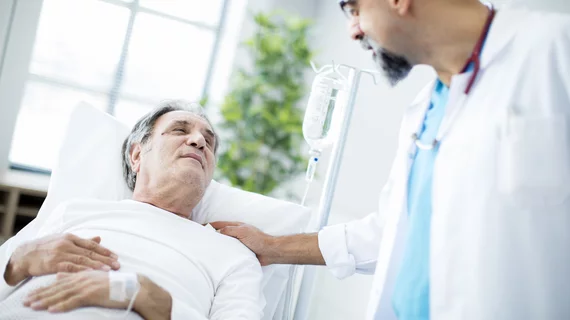Valve-in-valve TAVR a safe alternative for patients with failed bioprosthetic valves
Valve-in-valve (ViV) transcatheter aortic valve replacement (TAVR) is a safe alternative to surgery for patients with a failed aortic bioprosthetic valve, according to a new analysis published in EuroIntervention.
The study’s authors examined data from the Nationwide Readmission Database, focusing on patients who experienced a failed aortic bioprosthetic valve. While 3,724 of those patients underwent ViV TAVR, 3,045 patients underwent repeat surgical aortic valve replacement (SAVR). All patients were treated from 2016 to 2018.
Overall, the group found, ViV TAVR was associated with a lower in-hospital all-cause mortality rate and lower median post-procedure length of stay (4 days vs. 10 days) than SAVR.
Looking at other in-hospital outcomes—stroke rates, vascular complications, and so on—the team didn’t identify anything else statistically significant.
On the other hand, ViV TAVR was associated with a higher risk of 30-day and 6-month all-cause readmission. While 0.95% and 1.6% of ViV TAVR patients died during those 30-day and 6-month readmission periods, respectively, those numbers were 0.27% and 0.4% for SAVR patients. In addition, ViV TAVR was linked to an elevated risk of major bleeding/vascular complications than SAVR.
One key statistic was that the risks of in-hospital stroke, post-procedure pacemaker implantation, major adverse cardiovascular events and mortality during 30-day and 6-month readmission were all comparable between these two patient groups. Ultimately, the authors observed, this is a sign that ViV TAVI “can be performed safely in carefully selected patients.”
“The choice to proceed with ViV TAVR versus repeat SAVR should be a shared decision based on available expertise, the individual patient, and valve characteristics until randomized clinical trials with longer follow-up garner more data concerning long-term clinical outcomes in this patient subset,” wrote lead author Monil Majmundar, MD, a specialist at Maimonides Medical Center in Brooklyn, New York, and colleagues.
The full analysis is available here.

